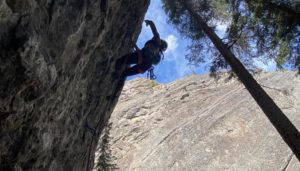Tips To Keep Your Climbing Rope in Good Shape

The following is an extract from the UIAA Alpine Summer Skills Handbook focuses the factors which weaken a rope and features as part of a chapter dedicated to Equipment.
You can purchase the book here.
Limitations of a dynamic rope
A wet rope will be heavier and harder to use.
If your rope freezes, its performance capabilities diminish (by almost half compared to a dry rope).
A rope can easily burn or “melt” under severe friction (a large fall, an excessively fast rappel, rope-on-rope rubbing).
A burned rope has reduced performance capabilities.
Dust, especially grains of granite and sand, causes premature damage to the rope’s core fibers and shortens its lifespan.
Solar/UV rays speed up wear and tear.
Kinks and snarls render use more difficult.
Impact over a sharp edge can sever the rope, which is why double ropes are safest when trad climbing.
Extending a rope’s life span
Do not drag your rope through the dirt.
Do not let your rope snag on anything and arrange it neatly at belay stations.
Avoid running the rope over abrasive surfaces and sharp edges as much as
Alternate the belay and tie-in ends.
Wash your rope in lukewarm water with a very mild detergent.
Dry your rope in the shade, and store it in a cool, dry place.
Do not leave your rope out in the sun.
Use your rope only for climbing.
Inspect your rope regularly.
Store your rope butterfly coiled or loose in a rope bag.
Keep your rope away from chemicals and acids.
Follow the Sterling treasure hunt below!


